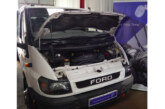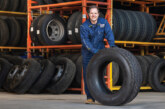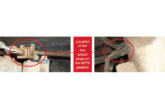Bridgestone provides some health & safety advice for when fitting tyres in workshops and mobile situations.
Tyre fitting, whether it is carried out in a workshop or mobile situation, is a very hazardous operation and should only be undertaken by qualified technicians. There are numerous incidents year-on-year where people have been seriously injured (and sometimes worse) from incidents involving tyres.
According to Bridgestone, in recent years tyre fitting has been largely, and incorrectly, a profession where training and health and safety seem to have taken a back seat over the preference of carrying out the job ‘as quickly as possible’. Whilst it is correct that a job needs to be completed in good time, there are three very important words absent from the ‘as quickly as possible’ statement and those are ‘and as safely’.
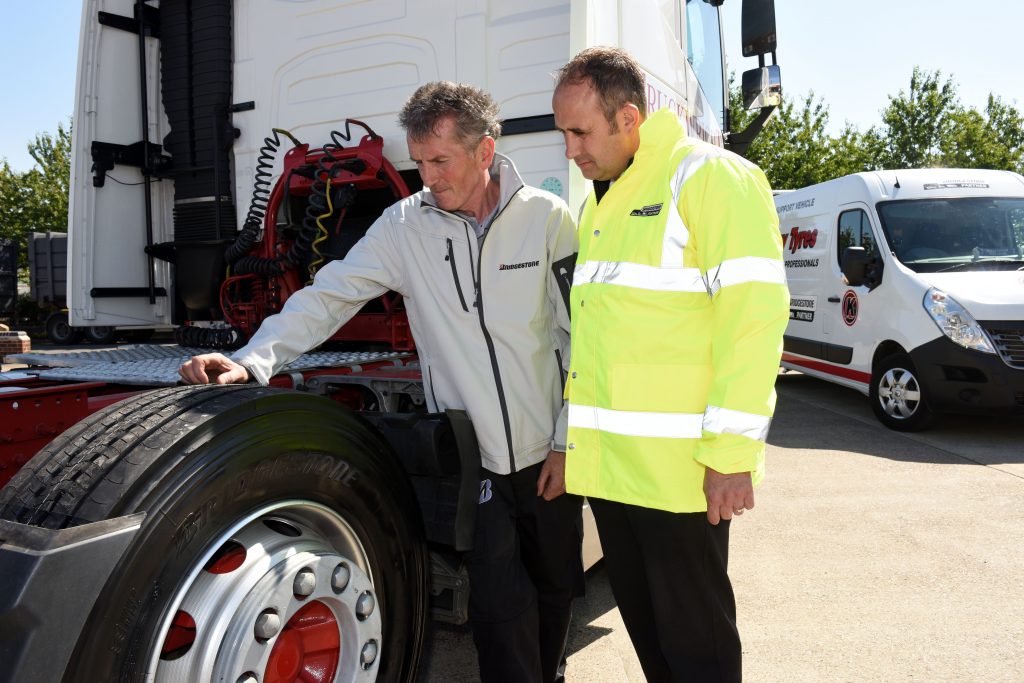
Whilst acknowledging the fact that many technicians working within the commercial vehicle industry work safely and professionally, it is very easy for others to fall into the trap of cutting corners in order to get a job completed quickly.
Overlooking as basic a task as putting suitable vehicle supports underneath a vehicle before removing wheels, results in the vehicle weight being supported by the jack and putting the health and safety of the technician (and others) at serious risk.
Tyre fitting can fall into two categories:
► Work carried out at the tyre depot premises.
► Work carried out ‘on-site’, which can include customer premise or roadside working.
Health and safety has a very important role to play in both categories and there are regulations that apply to both scenarios, as well as those that apply to working safely at the roadside. Whichever scenario
technicians find themselves in, there is one key word to consider and that is ‘training’.
In the workshop it can be easier to limit the risks as it is a more controlled environment and a risk assessment is easier to carry out. Health and Safety is often regarded as something that is the responsibility of the employer and, whilst it is the employer’s responsibility to carry out risk assessments under the Management of Health & Safety Regulations 1999, health and safety remains the responsibility of everyone on site.
The list of regulations covering health and safety in the workplace are numerous.
On Bridgestone courses, time is spent examining the following which apply:
■ The Health and Safety at Work Act 1974.
■ Management of Health and Safety at Work Regulations 1999.
■ Control of Substances Hazardous to Health Regulations (2012 amended).
■ Reporting Injuries Diseases and Dangerous Occurrences Regulations.
■ Electricity at Work Regulations 1998.
■ Lifting Operation and Lifting Equipment Regulations 1998.
■ Provision of Work Equipment Regulations 1998.
■ Work at Height Regulations 2005.
■ PPE at Work Regulations 1992.
■ Manual Handling Operations Regulations 1992.
Bridgestone says it offers a range of courses designed to bring safety in the workplace to the attention of all those involved in the industry. It has a new training centre, based at Horiba MIRA in Warwickshire, where it focuses on training and assessing technicians for working safely in the industry.
Courses delivered include:
■ REACT 2 day Roadside Technician.
■ REACT 1 day refresher course.
■ Commercial Wheel Security.
■ Tyre Inspection and Regrooving.
■ Manual Lifting and Handling for the tyre industry.
■ Commercial tyre repairs (minor): To current British Standard.
■Tyre Technician (inc. specialist wheels): Includes fitting of three piece rims.
■ NTDA Licensed Commercial Tyre Technician.
In addition to training courses the following is available: IRTEC Commercial Tyre Fitting assessments – this covers the following:
■ Removing and replacing a commercial wheel and tyre (tubeless) from a commercial vehicle.
■ Inspecting and repairing a tyre to current British Standards.
■ Inspecting and regrooving a commercial vehicle tyre.
During all aspects of the assessment the candidates are watched and assessed by a qualified assessor to ensure they work in the safest possible way. This will include tasks such as:
► Removal of wheel and tyre:
■ Assessing the work area and making secure.
■ Safely jacking and supporting a vehicle rig.
■ Removing the wheels without risk of damage or personal injury.
■ Deflation, removal and refitting of the tyre from the rim.
■ Inflation of the assembly in a safe and controlled manner.
■ Refitting the wheel to the vehicle rig correctly.
■ Correct tightening of the wheel nuts.
■ Lowering of the vehicle and clearing the work area.
► Assessor will ensure that all safety aspects will be taken into account including (but not limited to):
■ Carry out suitable risk assessments and secure the work area.
■ Safe use of vehicle jack, chocks and suitable vehicle supports.
■ Correct manual handling procedures throughout.
■ Safe working practice with tools and compressed air.
■ Correct inflation procedures including mandatory use of safety cage.
■ Correct procedures for refitting wheel and torque of wheel nuts.
► Tyre repair:
■ Inspect a tyre and decide suitability of a repair.
■ Correctly carry out repair of the assembly to British Standard.
► Tyre regrooving:
■ Correctly identify a tyre suitable for regrooving.
■ Identify suitability of tyre to be regrooved.
■ Safely and correctly carry out regrooving of the selected tyre.
At all times the assessor will be observing the candidates working and may at times verbally assess them during the task. No training or coaching can be carried out as this is purely an assessment exercise for
experienced technicians. The assessments are followed by an online test. Whilst not a training course in itself this assessment focuses on ensuring technicians are suitably competent in the areas listed and, on successful completion of the online test, candidates are issued with a license from the IRTE.
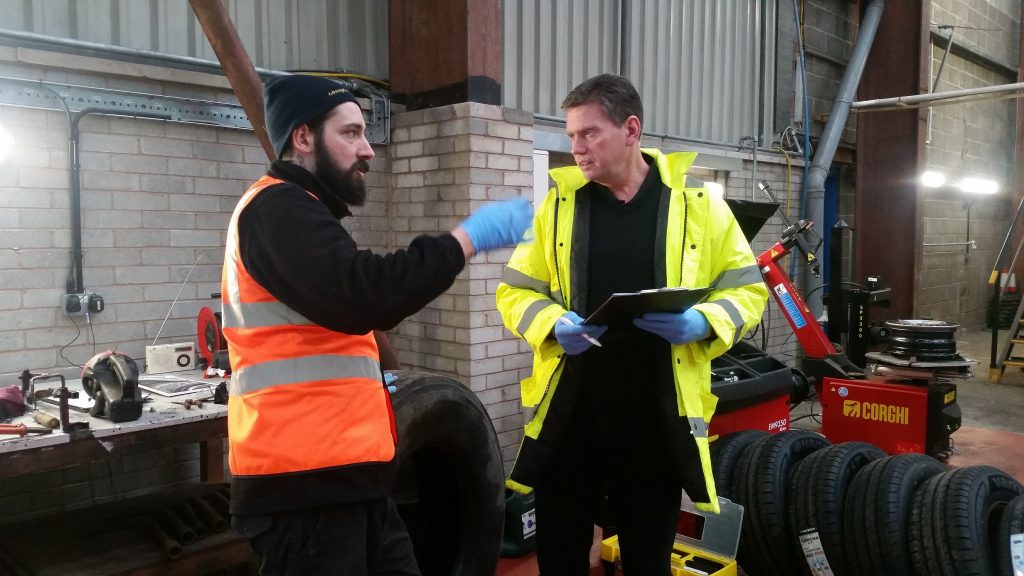
When working at the side of the road or at a fleet’s premises, although the above regulations still apply, the risk assessment procedure must be looked at slightly differently.
Most fleets will have health and safety rules in place for the premises and those must always be followed when visiting but additional risk assessments by the technician should always be carried out. A technician working at the side of the road faces many additional hazards that he has little control over.
Hazards they will face can include:
■ Weather.
■ Time of day.
■ Other traffic.
■ Controlling the driver at the scene.
■ Breakdown location.
■ SMART motorways.
SMART motorways are on the increase in the UK and represent a new and potentially dangerous situation to the roadside technician.
In this situation it is difficult to give a one size fits all risk assessment as no two situations identical. This is why, in a live environment Bridgestone advocate the use of Dynamic Risk Assessments as the situation can change rapidly. A dynamic assessment allows the technician to match the assessment to the exact situation and keep monitoring and assessing the situation throughout the entire job.
The decisions made are all based around the results of the assessments and may include calling the Highways Agency or Police for assistance if necessary. The responsibility for carrying out the risk assessment at the scene lies with the technician.
For more information on the courses and availability, contact phil.thirsk@bridgestone.eu or paul.turner@bridgestone.eu







